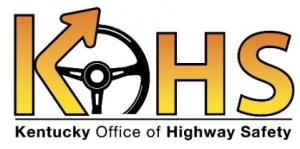In a crash involving a vehicle and a pedestrian, the pedestrian is far more likely to be killed or injured. For this reason, the Kentucky Transportation Cabinet’s (KYTC) Office of Highway Safety (KOHS) is partnering with the National Highway Traffic Safety Administration (NHTSA) in October to promote National Pedestrian Safety Month.
“We are asking every driver to watch for pedestrians as you would if it was one of your friends or your family members, and asking every pedestrian to be as aware of their surroundings as possible,” said Gov. Andy Beshear. “Common-sense habits, especially putting your phone down while driving or walking, can save dozens of Kentuckians’ lives every year.”

According to NHTSA, approximately 17 percent of people killed in roadway-related incidents are pedestrians, which equates to one every 84 minutes in the United States.
“Safe streets are a shared responsibility between motorists and pedestrians to help every user reach their destination safely,” said KYTC Secretary Jim Gray. “By practicing safe behaviors while driving and walking, we can help prevent crashes, injuries and deaths on our roadways.”
State Highway Engineer James Ballinger says a common problem for both pedestrians and motorists is distraction.
“It has unfortunately become all too common to see both drivers and pedestrians distracted by using a cell phone,” said Ballinger. “No matter if you are walking or driving, putting away your phone is important for safety – both yours and those around you.”
Staying alert is especially important as the end of Daylight Saving Time approaches and it gets dark earlier. According to NHTSA, most crash-related pedestrian fatalities occur at night.
“Adjusting to the new low-light environment can take time, and that puts everyone – especially pedestrians – at greater risk of death or injury,” said Ballinger. “Wearing bright, reflective clothing will help keep pedestrians visible.”
Last year in Kentucky there were 92 pedestrian deaths; 73 occurred after dark. So far this year, there have been 50 pedestrian deaths, 36 of which occurred after dark.

“There are many actions that both pedestrians and motorists can take in order to share the road safely,” said Ballinger. “If all road users commit to working together, lives will be saved.”
The KOHS and NHTSA recommend the following:
Pedestrians
1 Use crosswalks when available. Avoid jaywalking and crossing between parked vehicles.
2 Walk on sidewalks whenever possible. If you must walk on the street, walk facing traffic.
3 Don’t depend on the traffic signal to protect you. Motorists may be distracted, especially when adjusting to the nighttime travel environment.
4 Increase visibility, especially at night. Carry a flashlight, wear reflective clothing or attach reflective materials – such as fluorescent tape – to clothing, backpacks, purses and briefcases. These materials reflect light from headlights back to drivers, making it easier to see you.
5 Just because you can see a motorist does not mean the motorist can see you. If you cannot make eye contact or do not see the driver slow down for you, wait until the vehicle passes, even if you have the right of way.
6 Put the phone down and pay attention. Distraction changes the way you walk, react and behave, including safety-related behaviors.
7 Use caution if intoxicated. While you may be doing the right thing by not drinking and driving, risk still exists. Alcohol and drugs affect judgment, balance and reaction time, so always make a plan for a safe ride home.
Motorists:
1 Put the phone down and pay attention. Driving while distracted increases risk for all road users.
2 Yield the right-of-way to pedestrians. Be especially careful at intersections when turning onto another street.
3 Keep your windshield, windows and mirrors clean so you can scan the road ahead and establish a “visual lead.”
4 Obey the speed limit. Driving at the posted limit allows you to see, identify and react in time to brake for pedestrians.
5 Slow down and turn on your headlights during evening hours when you need more time to see a pedestrian in your path.
6 Be aware in neighborhoods and school zones. Children are often the smallest pedestrians, making them harder to see. Additionally, younger children may dart into intersections without understanding the dangers.
7 Drive sober. As with pedestrians, alcohol and drugs affect judgment, balance and reaction time. Always make a plan for a safe ride home.
8 Buckle up. Wearing a seat belt gives you the best protection against injury and death.
Visit www.walksafeky.com for more information.
















